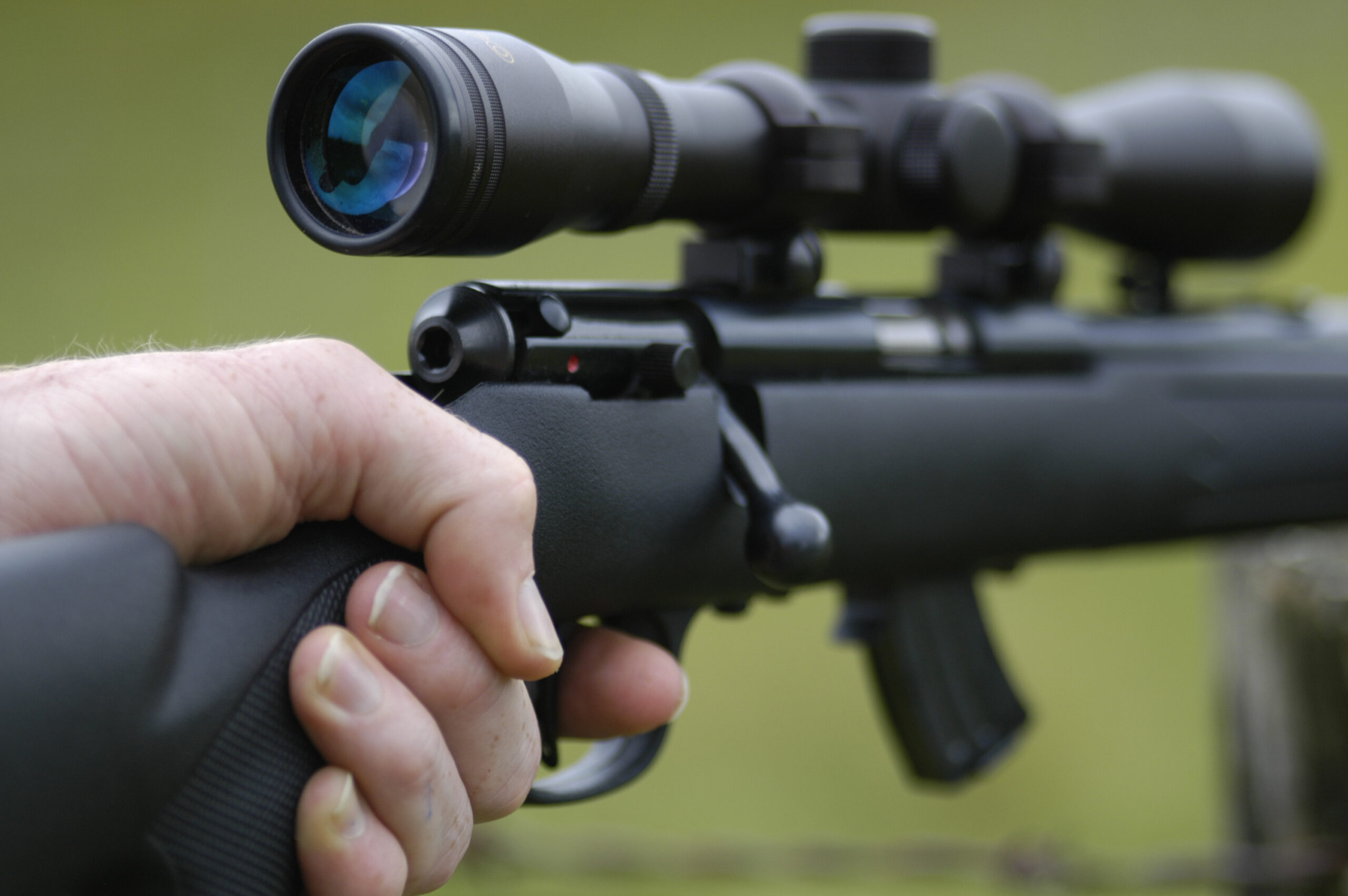As winter gives way to the early days of spring, hunters across the country are preparing for the upcoming season. Early spring marks the perfect time to take your rifle out of storage, clean it thoroughly, and ensure that it’s properly sighted in. Whether you’re gearing up for turkey, predator, or varmint hunting, proper rifle maintenance can make the difference between a successful shot and a missed opportunity. Over the course of winter, moisture, dust, and old lubricant can affect your rifle’s performance—making spring maintenance a critical step toward reliable accuracy and functionality in the field.
In this guide, we’ll cover everything you need to know about early spring rifle maintenance, including deep cleaning techniques, lubrication tips, and how to properly sight in your rifle to ensure pinpoint accuracy when it matters most.
1. Why Spring Rifle Maintenance Matters
After months of storage, even the best-maintained rifles can develop minor issues that compromise performance. Temperature changes, humidity, and dust accumulation can cause internal and external wear, affecting everything from bolt action smoothness to scope alignment. Early spring is the ideal time to address these issues because you have time to troubleshoot and make adjustments before heading into the field.
Common Post-Winter Issues:
✅ Residual moisture from winter storage leading to rust and corrosion
✅ Settling or shifting of the scope due to temperature changes
✅ Old lubricant thickening and attracting dust or grit
✅ Barrel fouling from previous shooting sessions
👉 Tackling these issues early helps ensure consistent shot placement and prevents equipment malfunctions during the hunt.
2. Step-by-Step Rifle Cleaning Guide
A clean rifle is a reliable rifle. Early spring is the time to perform a deep clean—not just a surface wipe-down. Follow these steps to ensure your rifle is ready for the season.
✅ Step 1: Disassemble the Rifle
- Start by ensuring the rifle is completely unloaded—check the chamber and magazine.
- Remove the bolt (if applicable) and any other easily detachable parts like the magazine and sling.
- Lay out a clean, dry work surface to prevent losing small components.
✅ Step 2: Clean the Bore
- Use a quality bore cleaner designed to remove carbon, copper, and lead fouling.
- Run a bore brush soaked in solvent through the barrel, always in the direction of the bullet’s travel.
- Let the solvent sit for a few minutes to break down the fouling.
- Follow up with clean patches until they come out free of debris and discoloration.
- Once clean, apply a light coat of gun oil to the bore using a clean patch.
👉 Tip: A bore snake is a quick alternative for field cleaning, but a full rod-and-brush system is better for deep cleaning.
✅ Step 3: Clean the Action and Chamber
- Use a nylon or brass brush to clean around the bolt face, extractor, and chamber.
- Apply a small amount of solvent to a cleaning patch and wipe down all metal surfaces.
- Use a cotton swab to reach tight areas and remove any built-up grime.
👉 Tip: Avoid over-lubricating the chamber—excess oil can attract dirt and affect cartridge seating.
✅ Step 4: Clean the Bolt
- If your bolt is removable, disassemble it according to the manufacturer’s instructions.
- Clean the firing pin, extractor, and bolt face using a small brush and solvent.
- Lightly oil all moving parts to prevent rust but avoid over-lubrication, which can cause malfunctions in cold or wet weather.
✅ Step 5: Wipe Down the Exterior
- Use a silicone cloth to wipe down the barrel, receiver, and stock.
- Pay attention to any areas where moisture might collect, such as the barrel channel and trigger guard.
- Apply a thin layer of rust-preventative oil to the metal components.
👉 Tip: If you have a wooden stock, apply a light coat of stock conditioner to prevent drying and cracking.
3. Inspecting and Maintaining the Optics
A misaligned scope can mean the difference between a clean kill and a missed shot. Spring is the perfect time to ensure your optics are in top shape.
✅ Step 1: Check Mounting and Tightness
- Use a torque wrench to check the tightness of your scope mounts and rings.
- Ensure that no screws have loosened due to vibration or temperature changes.
- If using a rail system, confirm that it’s mounted securely and aligned properly.
✅ Step 2: Clean the Lenses
- Use a lens brush or air blower to remove dust and debris from the lenses.
- Apply a small amount of lens cleaner to a microfiber cloth and gently wipe the lenses.
- Check for scratches or coating damage—replace the scope if visibility is compromised.
✅ Step 3: Adjust the Reticle (if needed)
- If the reticle is slightly off-center or your zero has shifted, adjust accordingly.
- Test your adjustments at the range before heading into the field.
4. Sighting in Your Rifle for the Season
Once your rifle is clean and the scope is properly mounted, it’s time to sight it in. Early spring weather can present some challenges, but with the right approach, you can zero your rifle effectively.
✅ Step 1: Start at 25 Yards
- Begin close to ensure you’re on paper.
- Fire a 3-shot group and adjust windage and elevation based on the point of impact.
✅ Step 2: Move to 100 Yards
- Once you’re centered at 25 yards, move to 100 yards for fine-tuning.
- Fire a 3-shot group and adjust in small increments.
- Continue adjusting until your group consistently hits the center of the target.
✅ Step 3: Test at Different Distances
- Once you’re zeroed at 100 yards, test your rifle at 50 and 200 yards to confirm holdover and drop compensation.
- If using a ballistic reticle, make sure the hash marks align with your rifle’s bullet trajectory.
✅ Step 4: Confirm Cold-Bore and Warm-Bore Shots
- Fire a shot from a cold barrel, then fire several more once the barrel warms up.
- If your point of impact shifts, adjust accordingly or note the difference in your shooting log.
5. Final Inspection and Storage
- Once your rifle is sighted in and cleaned, store it in a humidity-controlled environment.
- Keep the action open slightly to prevent moisture buildup.
- Place a moisture-absorbing packet in your gun safe to protect against rust.
Key Takeaways
✅ A clean rifle ensures reliable function and consistent accuracy.
✅ Properly sighting in your rifle before the season prevents missed opportunities.
✅ Early spring maintenance helps identify and resolve issues caused by winter storage.
✅ Adjust for cold- and warm-bore performance to improve shot consistency.
Conclusion
Early spring rifle maintenance is more than just a routine chore—it’s a vital part of setting yourself up for hunting success. A well-maintained rifle shoots more accurately, functions more reliably, and gives you the confidence to make precise shots when it counts. By cleaning, inspecting, and sighting in your rifle before the season opens, you eliminate potential problems and maximize your chances in the field. So take advantage of the early spring weather, head to the range, and get your rifle dialed in—because the next shot could be the one that defines your season.


